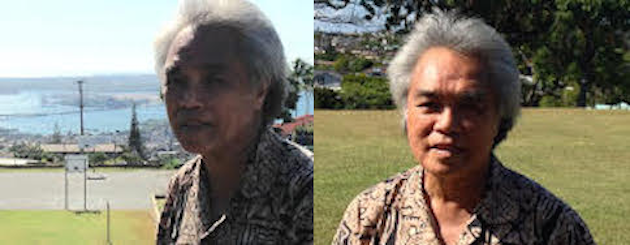HONOLULU—China has suggested arming Hawaii’s independence activists in retaliation for U.S. arms sales to Taiwan and recently threatened to challenge American sovereignty by making legal claims to the Pacific islands as its territory.
Chinese threats to back several groups of Hawaiian independence activists who want to restore the islands’ constitutional monarchy, ousted in a U.S.-backed coup over a century ago, has raised concerns that military facilities on the strategic central Pacific archipelago are threatened at a time when the Obama administration is engaged in a major shift toward Asia as part of its military and diplomatic rebalance.
Michael Pillsbury, a Pentagon consultant and author of the recent book 100 Year Marathon, said Chinese military hawks, known as "ying pai," told him they are ready to provide arms to Hawaiian independence activists in retaliation for U.S. arms sales to Taiwan.
"Beijing's extraordinary sensitivity to American arms sales to Taiwan—even one bullet or a spare tire for a jeep—often provokes angry words," said Pillsbury who has held talks with 35 Chinese generals in recent years.
"A favorite comparison the ying pai has made to me is ‘How would the Pentagon like it if we provide arms to our friends in Hawaiian independence movement?’" he said. "I was incredulous because I had never heard of such a movement in Hawaii, but, after checking I met a few of them."
Pillsbury said Chinese backing for the independence movement would be a concern. Some U.S. archival material shows U.S. authorities acted on their own in the 1898 annexation, he said, something Congress later investigated.
Pillsbury's book, published last week, reveals that Chinese hawks in the military and Communist Party are a key part of a 100-year strategy to vanquish and eventually overtake the United States as the world’s leading power in the coming decades.
Another indicator of Chinese interest in fomenting unrest in Hawaii surfaced in 2012, when then-Secretary of State Hillary Clinton revealed Beijing had threatened to assert legal, territorial claims over Hawaii.
Clinton said U.S. ownership of Hawaii came up during talks with the Chinese after she pushed back against Beijing’s destabilizing territorial activities in the South China Sea.
"At one point in one of my long discussions about this, one of my Chinese interlocutors said, ‘Well, we could claim Hawaii,’" she said. "I said, ‘Well, go ahead, and we'll go to arbitration and prove we own it. That's what we want you to do.’"
The Hawaii sovereignty movement is made up at least 10 groups that are seeking some form of independence from the United States and the re-establishment of the monarchy ousted in 1893, with the support of the U.S. government and a company of U.S. Marines.
The movement is non-violent and its protests in recent years have been limited to temporary takeovers of government facilities.
Leon Siu, a Hawaiian-born musician who holds the title of foreign minister of the Hawaiian Kingdom, one of the groups seeking independence, says U.S. military facilities on the islands are contrary to the original monarchy’s neutrality.
"First of all we’re not native Hawaiians. We’re Hawaiian nationals and we see our country as a lawful, independent country, and we’re working to restore that," Siu said in an interview. "The bottom line is we want our country back."

Siu said he has met with Chinese government representatives in the past but was unable to discern their motives or level of support for Hawaiian independence. He has been working through international organizations and international legal institutions for the past 10 years to gain recognition of Hawaii as an independent state.
Hawaii was ruled under an internationally neutral constitutional monarchy in the late 1800s. After the 1893 coup, a provisional government and then a Republic of Hawaii preceded formal U.S. annexation as a territory in 1898. Hawaii became the 50th state in 1959. About 1.4 million people live on the eight main islands.
Hawaii today remains one of the Pentagon’s most important strategic military outposts, located in the middle of the Pacific Ocean, some 2,500 miles from California, and 4,000 miles from Tokyo. It is the central point of the military’s strategy of shifting forces to the Asia Pacific as part of the so-called "rebalance," designed to counter Chinese bullying in the region.
The Navy’s historic Pearl Harbor Naval Base is home to the U.S. Pacific Fleet, which commands some 27 ships, 1,100 aircraft, and more than 140,000 sailors and civilians based throughout the Asia Pacific.
The Air Force operates nearby Hickam Air Force Base, headquarters of the Pacific Air Force, with 45,000 airmen in the region and 300 warplanes.
The Army’s Schofield Barracks is the headquarters for 80,000 Army troops deployed throughout the Asia Pacific region. The Army, facing sharp budget cuts, has announced plans to cut the number of troops based at Schofield by 16,000 and another 3,800 at nearby Fort Shafter.
The National Security Agency also operates a major electronic eavesdropping post in Hawaii known as "Kunia."
A defense official said military counterintelligence agencies several years ago conducted routine assessments of the Hawaiian independence movement to determine whether the movement might pose a threat, should its activists turn to violence and threaten U.S. troops.
Siu, of the Hawaiian Kingdom group, said he was told by a Pentagon official several years ago that contingency plans had been drawn up for withdrawing forces from Hawaii in the event of independence. "But I’m sure [the U.S. military] would rather renegotiate" the military bases to keep forces in place, he said.
Pentagon and Pacific Command spokesmen said they were unaware of any such contingency plan. "I'm not aware of any concerns here in the Pentagon for something like this occurring," said Pentagon spokesman Mark Wright.
On a future U.S. military presence, Siu said Hawaiian nationals believe they should be the ones to determine whether U.S. military bases remain in the country.
A military presence, however, would be contrary to Hawaii’s declared status as a neutral power in 1854.
A new Hawaiian Kingdom government after independence would have to decide the fate of the military facilities.
"I would favor a relationship [in which] the United States would help protect us because of our treaty of friendship, as well as Britain and France and every other nation with whom we have treaties, such as China, Japan," Siu said.
"More specifically, I would not favor the United States maintaining their military bases here but that’s not my decision," he added.
Siu says that despite the creation of the U.S. state of Hawaii in 1959, the kingdom remained a lawful entity that includes the entire Hawaii island chain and the remnants of the population at the time of the coup.
Under the 1933 Montevideo Convention, the Hawaii Kingdom meets all the conditions of a sovereign nation, except that it is not conducting international affairs, except on a small scale, he said, noting that his job has been carrying out that mission at the United Nations in New York and Geneva for the past 10 years.
Several international court cases also are challenging what Siu calls the "unlawful occupation" of Hawaii by the United States.
The independence movement was given new life in 1993 under the administration of President Bill Clinton who signed the Apology Resolution recognizing that the United States "apologizes to native Hawaiians on behalf of the people of the United States for the overthrow of the Kingdom of
Hawaii on January 17, 1893, with the participation of agents and citizens of the United States, and the deprivation of the rights of native Hawaiians to self-determination."
Not surprisingly, both the Hawaiian state government and the federal government dispute the independence activists’ claims. Both have tried to placate the movement by offering to recognize native Hawaiians as an American Indian tribe, with the same level of independence Indian tribes have had within the U.S. system of government.
Siu says the federal government has dismissed the independence claims as "water under the bridge" arguing that because of long U.S. government control that past claims of independence are no longer valid.
"Native Hawaiian people are quite insulted to be grouped as an American Indian tribe and so that has been totally rejected by our people," he said.
Cindy McMillan, a spokeswoman for Hawaiian Democratic Gov. David Ige, said the governor was unavailable to comment.
Chinese Embassy spokesman Zhu Haiquan said he has never heard any Chinese officials use "such rhetoric as you mentioned."
"It is either a serious misunderstanding or a rumor with untold intentions," he said.
China opposes arms sales to Taiwan, Zhu added.
